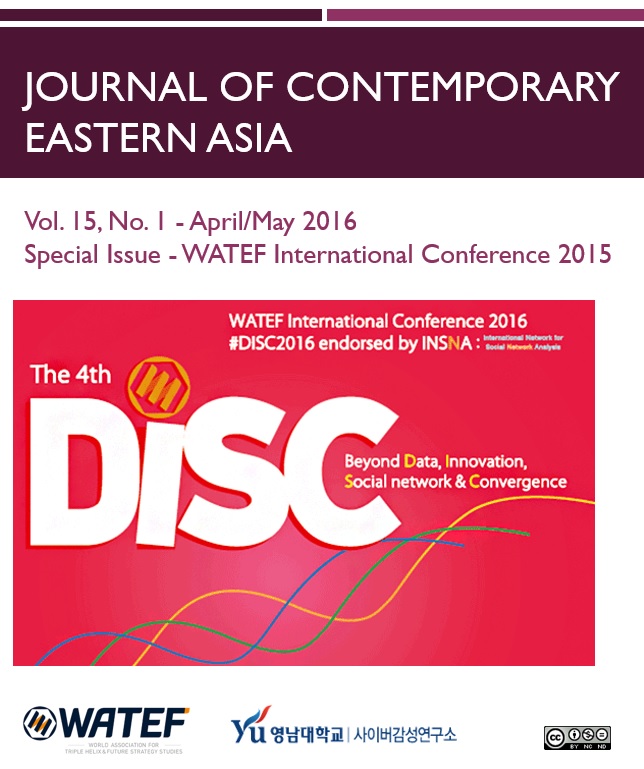- KOREAN
- E-ISSN2383-9449
- SCOPUS
 E-ISSN : 2383-9449
E-ISSN : 2383-9449
Article Contents
- 2024 (Vol.23)
- 2023 (Vol.22)
- 2022 (Vol.21)
- 2021 (Vol.20)
- 2020 (Vol.19)
- 2019 (Vol.18)
- 2018 (Vol.17)
- 2017 (Vol.16)
- 2016 (Vol.15)
- 2015 (Vol.14)
- 2014 (Vol.13)
- 2013 (Vol.12)
- 2012 (Vol.11)
- 2011 (Vol.10)
- 2010 (Vol.9)
- 2009 (Vol.8)
- 2008 (Vol.7)
- 2007 (Vol.6)
- 2006 (Vol.5)
- 2005 (Vol.4)
- 2004 (Vol.3)
- 2003 (Vol.2)
- 2002 (Vol.1)
Park, Sejung
Lim, Yon Soo
Nam, Yoonjae
Nam, Inyong
Park, Han Woo
Abstract
The purpose of this study is to introduce a synergetic configuration of stakeholders, especially government and university, into the corporate social responsibility strategy. The alignment of a company's CSR efforts with its business practices and values must be communicated strategically for effective and successful business outcomes. Therefore, the proposed process of CSR evaluation takes into account the three helices of the Triple-Helix perspective, university, industry, and government (UIG), and investigates how involvement in the Triple Helix actors influence corporations with CSR initiatives. Specifically, whether the public's awareness of a corporation's CSR activities is heightened by the concurrent support of the three helixes will be examined. We propose a methodology that enables corporations to determine effective levels of integration with government and educational institutions. The intensity of Triple-Helix indicators will be examined.
- keywords
- Triple-Helix, CSR, Information Management, Network Analysis
- Downloaded
- Viewed
- 0KCI Citations
- 0WOS Citations
